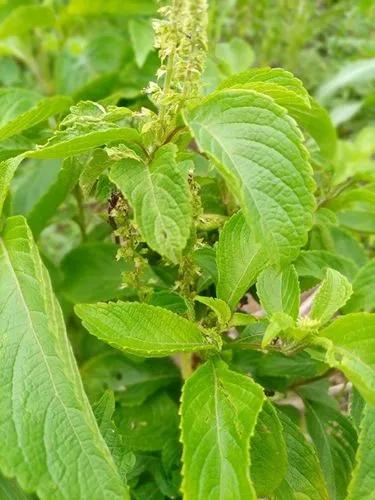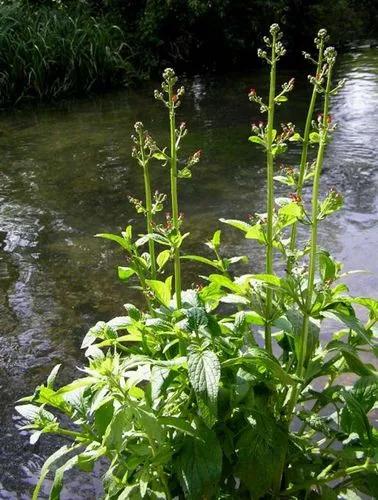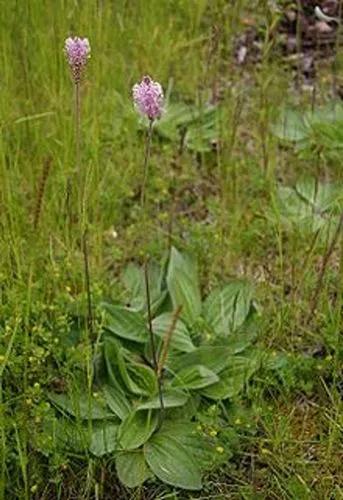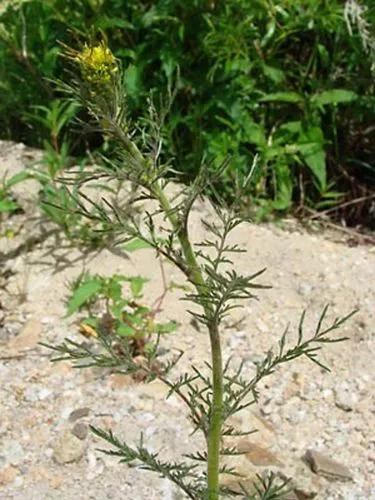Another type of basil that you'll find interesting is the Holy Basil. It's not your typical sweet basil to add to your pesto. But this one is something you can utilize for medicinal, spiritual, aesthetic, and some culinary purposes.
Holy Basil Care
Ocimum tenuiflorum



Native to the Indian subcontinent in Southeast Asia, the Holy Basil is another basil species popular in folk medicine as an herbal tea. This species belongs to the mint family (Lamiaceae) and can grow as an annual or short-lived perennial. Each shrub grows an average height of 3.3 feet (1 meter).
One way to identify Holy Basil is by looking at its leaves. The plant has greenish-purple oval-shaped leaves with a minty, fragrant smell. Holy Basil also produces tiny flower clusters at the branch terminal—their color ranges from white to magenta, enclosed by purple sepals. The flowers, leaves, seeds, and their extracts are all edible.
How to Care for the Plant

Water

One thing to remember about growing this species is to water regularly to keep the soil moist. The key is to strike a balance because we don't want the soil drenched or soggy. Either condition is stressful to the plant. Don't forget to drain excess water from the pot to prevent overwatering and root rot. As a rule, water only when the soil is 30 to 50% dry.

Pruning

Once the Holy Basil reaches a height of 8 inches (20 cm). Prune the outgrowing and leggy branches to encourage more lateral growth. Also, watch out for the dead and diseased parts because you have to remove them. Don't prune more than ⅓ of the plant's growth. Prune the flowers to halt seed production and extend the plant's life.

Fertilizer

Using organic materials versus fast-release fertilizers is much better when feeding herbs like Holy Basil. Fast-release fertilizers encourage rapid foliage growth and early flowering, resulting in lower concentrations of essential oils. To ensure a good supply of nutrients, amend the soil with plenty of organic materials such as compost, vermicast, or well-rotten manure.

Sunlight

Best growth is achievable if you provide your Holy Basil with plenty of sunlight, preferably full sun. But if you grow it indoors, you can do so, provided it receives about 4 to 6 hours of light daily.

Soil

Light, airy, loamy soil would be the best choice for this plant. Make sure that your soil mix is well-draining and amend it with fertilizers to get the best growth results.

Propagation

You can multiply this herb using cuttings or seeds. Choose healthy, young stems for cuttings and cut them at least 6 inches (15 cm) long. It should contain leaf nodes. Remove the basal leaves and plant the cuttings into a moist potting mix. You can cover the plant with clear plastic to maintain high humidity and prevent drying out of the cuttings. Alternatively, you can root the cuttings in water before transplanting them into the soil.

Temperature

As a tropical species, the Holy Basil will require an average temperature of 70°F (21°C). If your average temperature is hotter than this, your plant will survive as a perennial plant. But if it's colder, it will live as an annual.

Container

Growing this herb in containers is highly possible and more convenient if you have limited space. Considering the maximum height this plant can reach, a pot with a diameter of 0.5 (15 cm) feet is already fine. Start with a small pot first, then increase the pot size as the plant grows. Repot your Holy Basil when the plant is outgrowing the container. Pots made of plastic, terra cotta, or ceramics are good options. However, ensure that they have holes at the bottom for proper drainage.

Fun fact

Holy Basil is an important part of Hinduism as its presence conveys deep religious devotion, meditation, and purity. The name "Tulasi or Tulsi" was taken from the Hindu goddess Lakshmi (Tulasi).

Popularity

12,568 people already have this plant 732 people have added this plant to their wishlists
Discover more plants with the list below
Related articles






